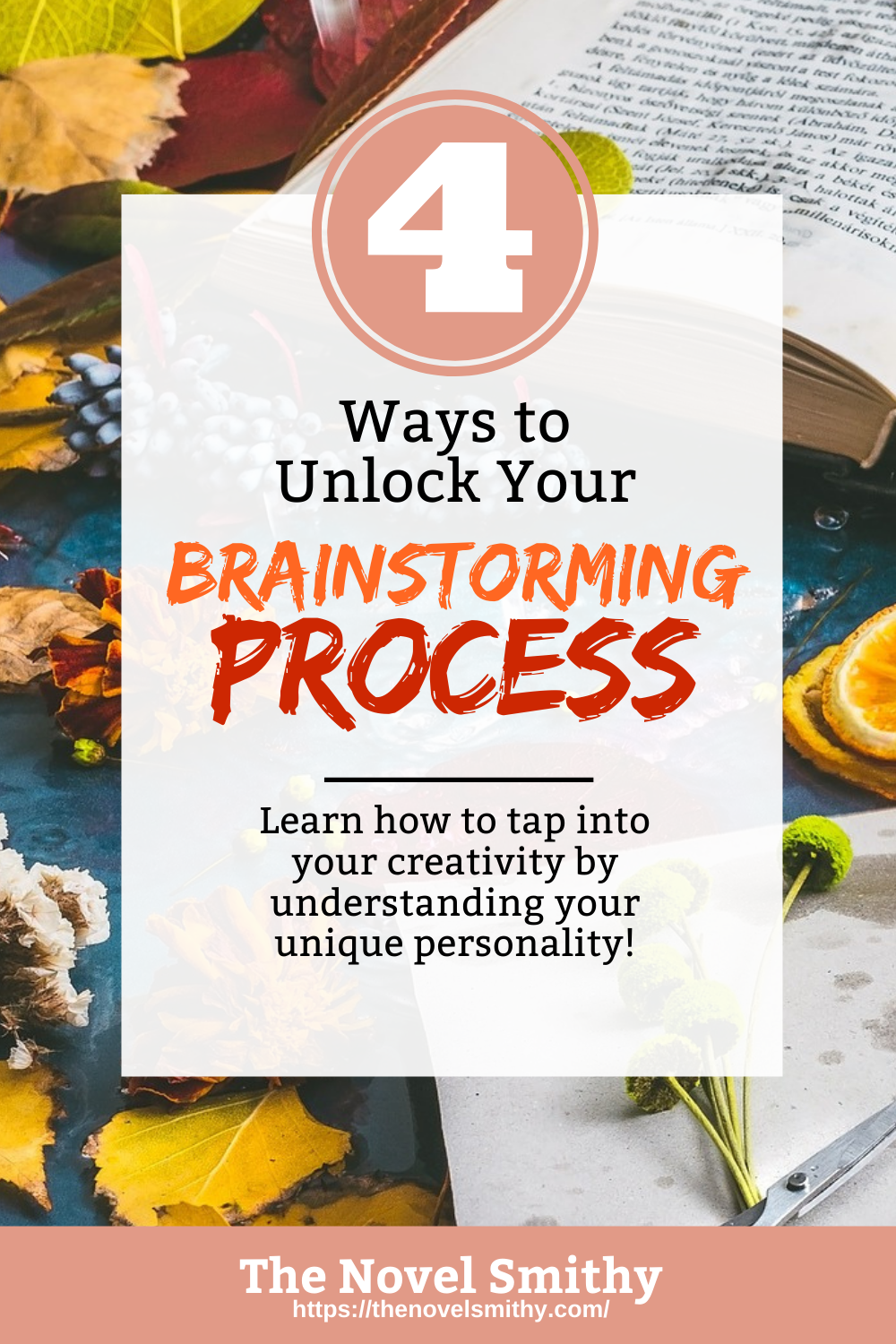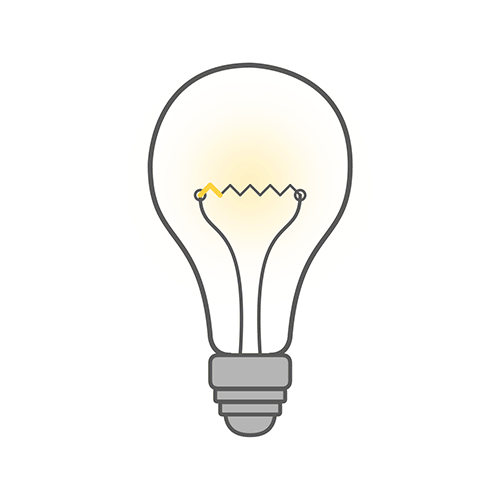4 Ways to Unlock Your Brainstorming Process
Brainstorming is a very personal experience…
While some writers work best in isolation, others thrive on the energy of travel or people watching. Still others crave a friendly conversation or the feeling of awe they get from a beautiful painting. Yet, despite this fact, many writers force themselves to follow a predefined “brainstorming process”—and as a result, they struggle to find their inspiration.
Fortunately, there’s a better way. Rather than trying to follow some universal brainstorming system, you can discover and craft your own unique system by figuring out what sparks your creativity and inspires you to write. But, where do you start? Well, first you’ll need to find your brainstorming triggers.
The Importance of Finding Your Muse
Contents
 When it comes to writing a novel, brainstorming ideas for your story will be one of the first hurdles you face. As a result, brainstorming is a major topic of discussion in the writing world—but I still get the feeling that a lot of writers underestimate its importance.
When it comes to writing a novel, brainstorming ideas for your story will be one of the first hurdles you face. As a result, brainstorming is a major topic of discussion in the writing world—but I still get the feeling that a lot of writers underestimate its importance.
You see, brainstorming will affect every stage of writing your novel:
#1: When you’re still in the planning stages, you’ll need to brainstorm new story ideas, create your cast of characters, and find your novel’s plot.
#2: While writing, you’ll need to brainstorm ways to flesh out your story, while also putting your creative vision to words.
#3: And when editing your novel, you’ll need to brainstorm clever twists to overcome problems and refine your manuscript.
This is why having a reliable brainstorming process is so important—but even more important is knowing your brainstorming “triggers.” For instance, some writers:
- Find their best ideas while doing repetitive tasks like mowing the lawn or doing dishes.
- Feel most creative when around other people.
- Think by speaking aloud, and enjoy talking through their story with others.
- Need isolation and silence to brainstorm, almost like meditating.
Essentially, these triggers are the things that spark your inspiration and fuel your writing, helping you overcome your mental barriers and unlocking your brainstorming process.
However, not every writer will have the same triggers.
As you can probably tell from the list above, there’s a huge variety of triggers out there. While I like to brainstorm in silence, other writers thrive when surrounded by interesting crowds to observe. If I tried to follow their brainstorming process, I can basically guarantee I would fail, and vice versa.
So what should you do? Well, to create your ideal brainstorming process, you’ll first need to discover your brainstorming triggers…
How to Discover Your Brainstorming Triggers
As I mentioned, I’m very much a hermit when it comes to writing. I would daydream out the window in silence for hours if I could, before curling up and putting my vision to words over the course of a few quiet days. Rinse and repeat.
However, life demands I fill my days with things other than just writing—which is why knowing my brainstorming triggers is so valuable.

For instance, I know that if I lay down and do nothing but stare into space and think for twenty minutes, I’ll have enough creative juice to write for about an hour before I burn out again. This means that, when I’m planning my writing schedule, I block out time specifically to “do nothing.” The act of just thinking, in silence, on my own, is my brainstorming trigger.
Of course, the real question is—how do you find yours?
Well, because brainstorming is so personal, I can’t simply give you the answer—it will require some self-reflection on your part. However, there are some common categories most writers seem to fall under:
- Those that think best in isolation
- Those that brainstorm by observing others
- Those that get their best ideas though conversation
- And those that brainstorm by soaking in art and music
Of course, there are certainly people who crossover between many of these categories, and you won’t necessarily fall under just one all the time—even I find talking through tough story problems helpful on occasion.
Still, these can act as a great starting place as you figure out your own unique brainstorming triggers. So, let’s take a moment to unpack each of these categories in more detail, before diving into my tips for incorporating your newfound trigger into your writing process.
4 Ways to Brainstorm a Novel
Through Isolation:
First up, we have brainstorming in isolation—my personal favorite of the four.
If you’re easily distracted by noise and movement, or if you find you work best when you have long stretches of time to concentrate, then this category might be a good fit. Typically, those that prefer brainstorming in isolation enjoy taking time to recharge on their own, and often feel most creative after spending some quiet time in their own head.
Here are some common triggers for these types of writers:
- Meditation
- Doing the dishes, mowing the lawn, or other repetitive tasks
- Daydreaming or simply watching the world go by
- Free-writing, also known as writing “train of thought”
If you fall into this category, one of your biggest challenges will be accepting that “doing nothing” is an important part of your writing process. Rather than pressuring yourself to be hyper-productive, block out time in your day to daydream and zone out. These will often be your most creative moments.
You might also find it helpful to keep a small notebook on hand so you can easily jot down ideas as they come to you—after all, these types of writers often find their best ideas when they’re far from their desk!
Through Observation:
In contrast to those who brainstorm best in isolation, there’s also a group of writers who thrive in a crowd. These writers find their best story ideas through observing other people and the world around them, and feel energized and excited by new experiences.
Here are some common triggers for these types of writers:
- People-watching
- Traveling to new places
- Going to large social events
- Getting outside to find a change of scenery
If you’re one of these writers, blocking out time for new experiences will play a big role in your brainstorming process. Whether you sit at a park, people-watch at a cafe, or mingle with a crowd, you’re most creative when you’re an active part of the world around you.
Consider making good use of your phone’s camera to take snapshots of cool locations or interesting sights, and jot down notes about unique conversations or events as well. When you return to your desk to start writing, use these to inspire your stories and break past your writer’s block!
Through Conversation:
At first glance, this third category might seem like a duplicate of the previous one—however, brainstorming through conversation isn’t quite the same as through observation.
You see, some people are most creative when they have another person to bounce ideas off of, even if they aren’t usually drawn to large crowds. This is called rubber duck debugging in the programming world, and it works essentially the same for writers. By explaining your story ideas to another person and letting them ask questions and challenge you on things, you unlock parts of your story you never would have considered otherwise.
Here are some common triggers for these types of writers:
- Joining a writing group online or in person
- Explaining your story to an understanding friend
- Talking through tough story problems
- Brainstorming through dictation
If you fall under this category, then finding a writing partner or critique group will be vital to your brainstorming process. They’ll give you an outlet to explore your story, and your conversations will play a big role in helping you brainstorm your novel—though make sure you return the favor, of course!
But what if you don’t have anyone around to bounce ideas off of?
Well, then do like the programmers do—find yourself a rubber duck (or stuffed animal, family pet, etc…) and explain your story to them. It might feel awkward at first, but once you get used to it, you’ll find it unlocks a lot of the same creativity as talking to an actual person would. 😛
Through Inspiration:
Last but not least, we have brainstorming through inspiration.
This is probably the most self-explanatory of the categories on this list. Essentially, these writers find their best ideas by observing other people’s art—be that writing, movies, music, or sculpture. In fact, there’s an entire book written about this topic called Steal Like an Artist. I encourage you to check out if this category applies to you!
Here are some common triggers for these types of writers:
- Mind-mapping or creating a vision board
- Starting a story playlist to listen to while you write
- Going to art museums or live performances
- Reading other books, novels, and poetry
Of course, the one danger with this category is that you become so busy consuming others’ art that you never create any of your own. Rather than obsessing over making your work “as good as” someone else’s, focus instead on what you like about the art that inspires you and how you can make it even better through your writing.
“Popularized by Austin Kleon, the concept of stealing like an artist acknowledges that there are no truly original stories left to tell and instead celebrates the power of influence.” – Kristen Kieffer
For instance, if a painting of a wistful woman catches your eye, imagine what her life would be like if she lived in your story’s world. If you’re struck by a particularly powerful piece of poetry, consider how you can capture that same feeling in your novel. By doing so, you’re not only appreciating those pieces of art, but also using them to bolster your own brainstorming process!
Crafting Your Unique Brainstorming Process
Now that you understand some of the common categories of brainstorming, hopefully you have a better idea of what your unique triggers might be. So, what comes next?
Well, I would start by experimenting!
Figure out what category fits you best, and then pick some potential triggers from the category. Incorporate them into your writing routine and reflect on the results. Which ones helped you get in the writing zone? When did you feel most creative? How could these triggers fit into your writing life? Once you have a good handle on what your triggers are you can make them a permanent part of your brainstorming process.

Above all, don’t feel pressured to fit into any one person’s ideal brainstorming process. While you can (and should) take advice and inspiration from other writers, we’re all unique—and our writing journeys will be too.
Ultimately, I hope these four categories have given you a solid starting place as you work to unlock your brainstorming process, and I’d love to know what unique triggers you might already use! Are there any I didn’t list? Let me know down in the comments. 🙂


Leave a Reply